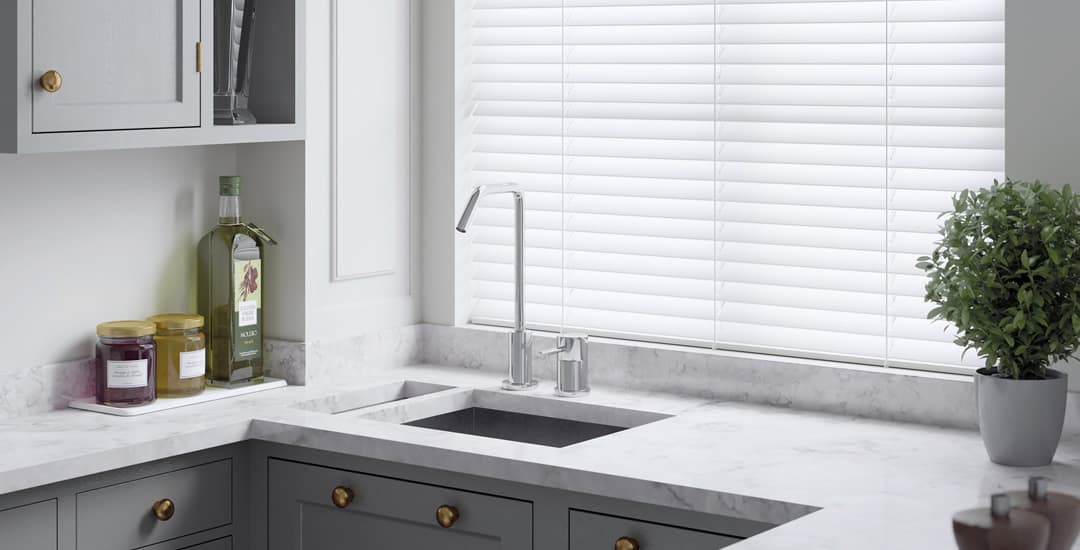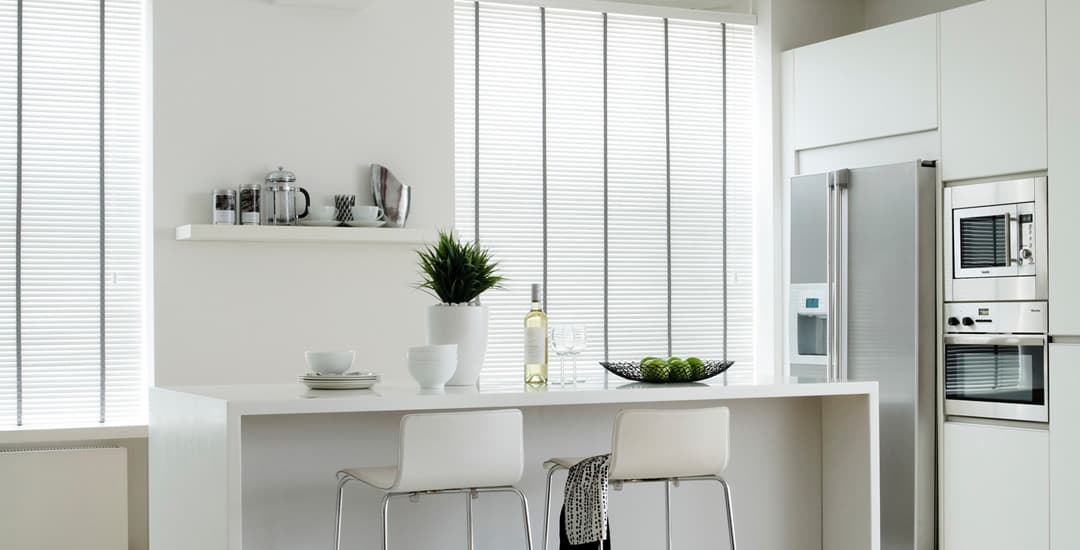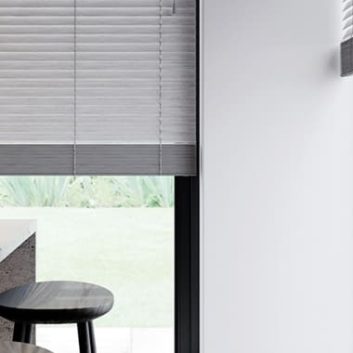
Are white wooden blinds easy to clean? The technical answer to this is that they’re exactly as easy to clean as any other colour of wooden blinds. The more useful answer is that anything white shows up dirt clearly, and so will need more frequent cleaning than something dark, as well as possibly requiring more exacting cleaning as simply smearing the dirt about is easily forgiven by a dark wooden blind, but held against you for the long term on a lighter coloured one.
This blog post will go into a bit more detail about cleaning white wooden blinds, of both the real wood and the faux-wood varieties, as well as outlining how these two respective materials differ in terms of what you can clean them with and why.
Also, any smokers in the room? Got a white wooden blind? Bold choice, friend!
Just for you, I will also talk about the efficacy (or otherwise) of cleaning nicotine stains off white wooden blinds, including what you need to do. White wooden blinds discolour occasionally due to UV exposure as well, although this is vanishingly rare in modern blinds; but even so, I’ll just give this a quick mention further along as well.
Are white wooden blinds easy to clean compared to other types of blinds?
To get us going, let’s go over the basics of what you need to know about the marvels that are white wooden blinds. “Easy to clean” is a relative term, which is perhaps the first point to note, but as both wood and faux-wood are hard materials, their cleaning requires less time and effort than might be required of a fabric blind of any type.
What can you use to clean white wooden blinds?
This depends in large part on whether your white blinds are made of real wood or faux-wood. Both types of blinds can be cleaned with a duster (feather or antistatic fabric) and this will generally be all that is required.
Faux-wood blinds can also be cleaned with water and potentially, a cleaning solution, which is not a viable option for real wooden blinds.
Are white faux-wood blinds easier to clean than white real wood blinds?

Kind of… Faux-wood blinds might fairly be said to be easier to clean than real wood blinds in one respect – because they’re waterproof and so can be washed or wiped off with a wet cloth very effectively and without causing them any harm, which is not the case for real wooden blinds as a go-to cleaning solution.
However, something fairly extreme will usually need to have happened to your white wood or faux-wood blinds before you’d need to actually consider cleaning them with anything more onerous than simple dry dusting as part of your general household cleaning. If you do this every couple of weeks or so and your blinds aren’t exposed to grimy hands or spaghetti hoops (both generally originating from younger children) and they’re not in a kitchen and so, apt to build up a film of cooking fats over time, dusting is all that’s ever likely to be needed.
White wooden blinds (the real wooden kind) aren’t designed to be used in rooms like kitchens or bathrooms as they can’t handle humidity or moisture to any meaningful degree, and so this means that dusting is pretty much all your white real wooden blinds will ever need, and also all that should ever be attempted on them either.
Do white wooden blinds discolour?
Unless they’re marked with something physical that changes their appearance, white wooden blinds don’t tend to discolour in any way for any reason, although yellowing, while still very uncommon, (for a couple of reasons that I’ll cover next) is more common with white wooden blinds than those of any other colour.
Are white wooden blinds easy to clean if they’re yellowing from UV exposure?
“Are white wooden blinds easy to clean if they’re yellowing from sun exposure?” might not be a question you’ve ever even considered, and the good news is you probably won’t ever need to consider it as anything other than a theoretical exercise either.
Yellowing of white and other very light-coloured blinds made from hard materials used to be reasonably common when said blinds reached old age, particularly if used in very bright or sunny rooms. This was due to the effect of being bombarded with UV light for protracted periods of time, in the same way that darker fabrics and materials might fade rather than yellow under the same conditions.
However, modern white wooden blinds (made of both faux-wood and real wood) are treated with a special UV protection agent to slow down any theoretical yellowing to the extent that there’s a strong chance that even really high-quality blinds (like ours, obvs) will reach the end of their natural lifespan before any visible yellowing begins to become apparent.
Are white wooden blinds easy to clean if they’re yellowing due to cigarette smoke?
The only other common cause of yellowing of white real wood or faux-wood blinds is exposure to cigarette smoke over time – and this too isn’t common these days as smoking actual cigarettes that smell manky is considered so gauche now, compared to huffing away on flavoured vapour that smells like donuts and that may or may not be less harmful to you long term.
But anyway, if someone smokes in a room with white wooden or faux-wood blinds, this will cause yellowing over time, and much faster than sun-yellowing.
The speed at which this is apt to happen is based on an equation factoring in the same variables that dictate the speed at which the room’s smoker will earn their iron lung; i.e., a range of things including how much the room’s occupant smokes, how strong/heinous their cigarettes are, and how large and well-ventilated the room is.
What can you use to clean white wooden blinds (real ones) that have yellowed from cigarette smoke?
Cleaning white real wood blinds coated in a film of nicotine/tar goop can be a potential issue long term. Nicotine, tar, and whatever else it is in cigarettes that turns things yellow won’t be removed by a light dusting, and will require a proper wipe or clean off with a cloth that’s both damp and potentially, contains some kind of detergent.
However, while you will almost certainly get away with doing this once or very, very occasionally if the cloth isn’t very moist and you air/dry the blind’s slats promptly and effectively as you go along, long term, this will potentially cause water marks, discolouration, or even warping of the blind’s wooden slats.
Also, as real wood is porous, it is exponentially more likely to actually absorb the substances in cigarette smoke that cause the yellowing to occur, and so if exposed to smoke over too long a period of time, the yellowing might not clean off fully at all, even if you risk damaging the blind itself with water and detergent in order to try to revive it.
What can you use to clean white wooden blinds made of faux-wood if they’re nicotine stained?
When it comes to cleaning faux-wood blinds of yellowing caused by cigarette smoke, this is far easier and more effective, as faux-wood blinds are waterproof and so can be washed or sponged off properly with warm water and a suitable detergent. They’re also far more resistant to actually staining yellow if left in a smoky room for years and years without cleaning, although this will potentially happen eventually.
Are white wooden blinds easy to clean nicotine from in terms of the fabric parts and operating mechanism?
One other point to note is that cigarette smoke won’t just cause a manky film to develop on a white wooden blind’s slats; it will also stain their lift cords or ladder tapes (which is hard if not impossible to resolve) and gum up the operating mechanism eventually too, requiring you to dismantle the headrail array to clean all of the little working parts.
Now, as an ex-smoker myself, I am not going to make the obvious comment about the best way to stop a white wooden blind from yellowing due to smoke, given that you all know what that comment would be and that it is guaranteed to get any smoker’s slappy hand twitching.
But I will instead say that if you want to have white blinds in a room where you smoke, get white faux-wood blinds rather than white real wood blinds, as you’ll be able to wash them properly and keep them looking good long term.
Although of course if you get real wood white blinds instead, you can reasonably claim in a few years that you’ve replaced them with a new yellow-coloured set instead, and nobody will be any the wiser… Probably.




